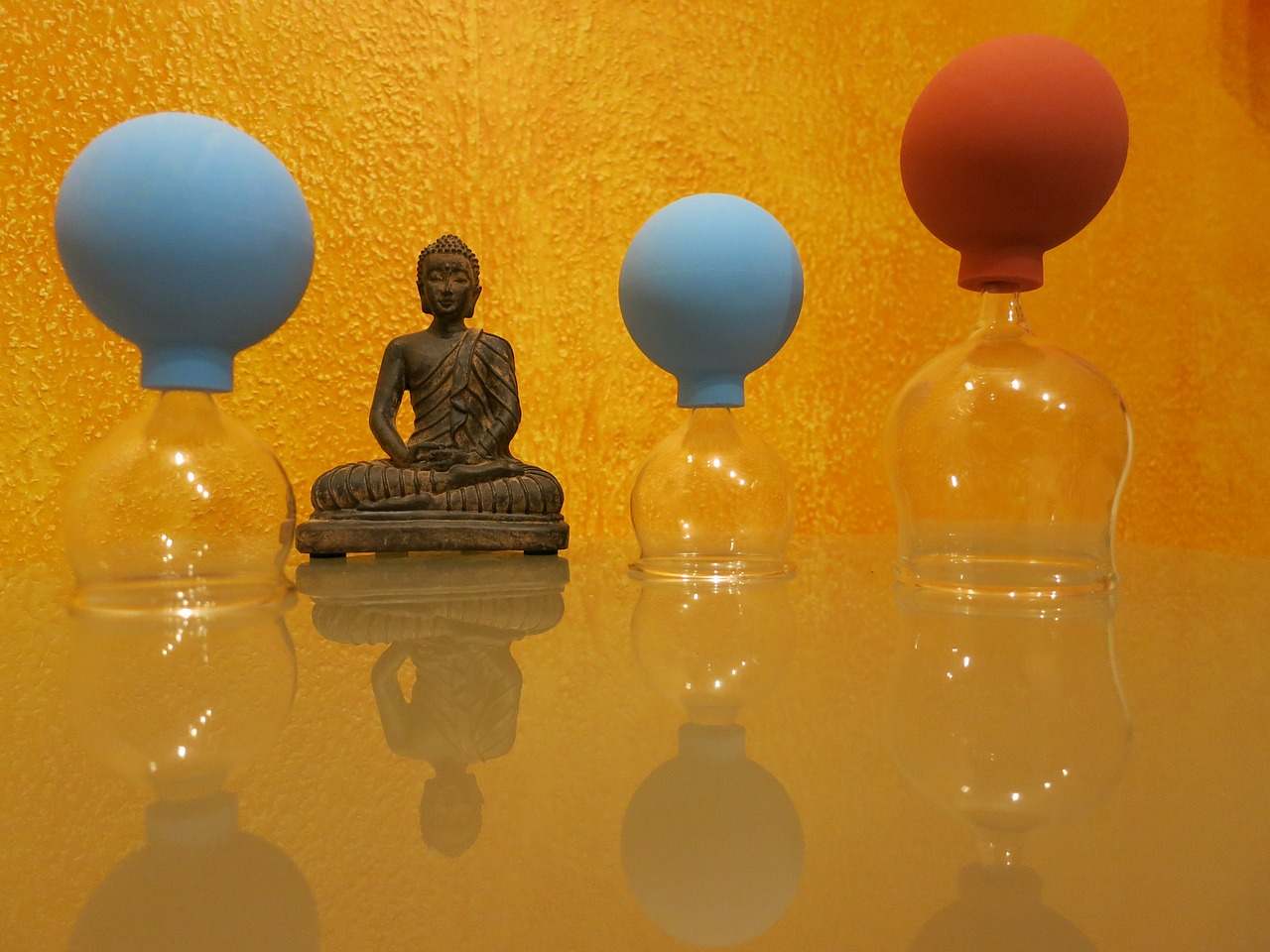
The thrill of the Olympics, and athletes like Michael Phelps and Alex Naddour have brought a lot of attention to the benefits of cupping therapy. Cupping therapy might be trendy now, but by no means is it new. This holistic practice dates back to ancient Egyptian, Chinese, Indian and Middle Eastern cultures. One of the oldest medical textbooks in the world, the Ebers Papyrus, describes how the ancient Egyptians used cupping therapy in 1,550 B.C.
Many modern medical doctors will tell you cupping is just the latest snake oil medicine straight out of the Wild West, and it does not really work. Others will tell you cupping therapy is the cure all of all cure alls available to consumers. However, the question still remains….. What is cupping therapy, and how can it benefit me?
Cupping has three distinctive categories: Dry cupping, Wet cupping, and Massage cupping. Cups are either glass, where the inside is wiped down with alcohol and the practitioner lights it on fire momentarily creating a heat and placing the cups on the body forcing a vacuum seal when the fire is extinguished; or medical grade silicone cups which are compressed against the tissues and create a vacuum suction. Licensed Massage Therapist Danni Powers uses the silicone cups in her practice. The cups come in a variety of sizes from about one in diameter up to four inches in diameter.
Danni uses dry cupping, which is the form used amongst the U.S. Olympic Athletes. In some cultures, the cups are placed along the energy meridian lines of the body. Other practitioners place the cups on spot specific areas of tension, inflammation, knots, or stiffness; joints or connective tissues and where the body needs healing. They are left on for five to 15 minutes to gather the blood to stimulate healing.
Wet cupping, also known as hijama is a form of cupping therapy where tiny incisions or scratches are made along the meridian points then cups are placed on top of these scratches removing the harmful blood lying beneath the surface of the skin. This technique is practiced more commonly among Chinese, Islamic, and Indian cultures. It is highly recommended you see a cupping therapist who specializes in wet cupping to have it administered.
Massage cupping is a form of cupping where a lubricant is applied to the body and the cup is connected to a machine and then moved around the areas of tension. The machine creates a vacuum seal between the cup and the soft tissues. The cup is then glided over the body creating a deep tissue massage without the same discomfort some deep tissue massage can cause.
Cupping therapy has nearly no limitations as to where the cupping tools can be placed on the body. They can be used on the neck, shoulders, back, sacral area, hip, abdomen, thighs, upper arms, calves even hands and feet. The “vacuum” seal the cupping tool creates on the soft tissue of the body pulls the skin away from the muscle, drawing in new, oxygenated blood allowing your body’s parasympathetic system to believe it has been injured. This causes the body to initiate an inflammatory response forcing new blood to flush through the area being worked, when the seal of the cup is broken, it mobilizes antibodies allowing the body to heal itself naturally.
In some cultures it is believed the darker the “bruising,” the more the body needed the work in that area. “Blood flow is the body’s way of naturally healing,” says Houman Danesh, M.D., an assistant professor of anesthesiology and rehabilitation medicine at Mount Sinai Hospital who frequently combines cupping with mainstream pain therapy techniques. “Increased blood flow can be beneficial to jumpstart or restart a blunted healing response.”
Try adding cupping to your massage with Danni and see if you can benefit from this ancient technique practiced for centuries. For the month of September only, Danni will be offering free Cupping Therapy to her 60 or 90 minute Swedish or Deep Tissue massages.
September massage

Connect With Us